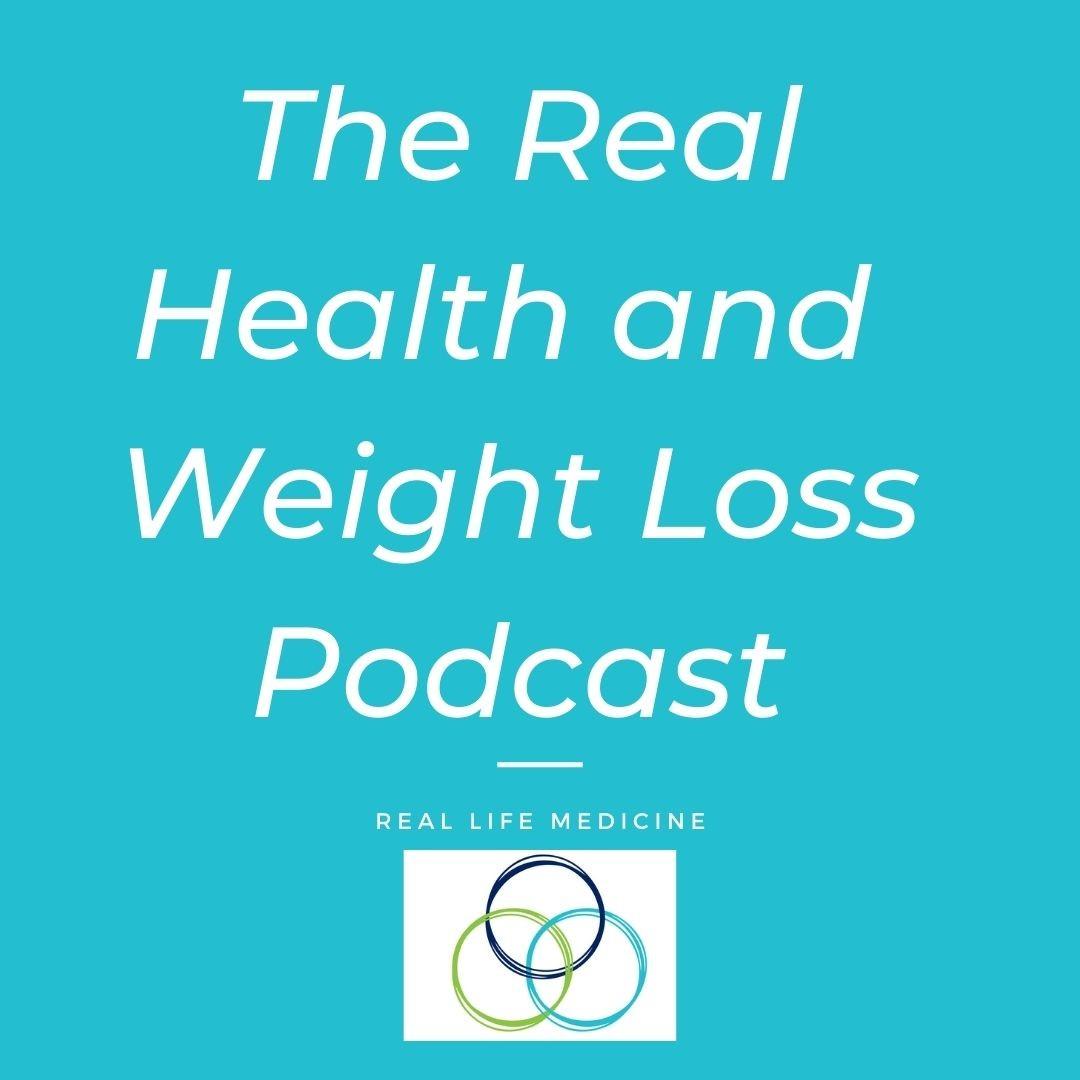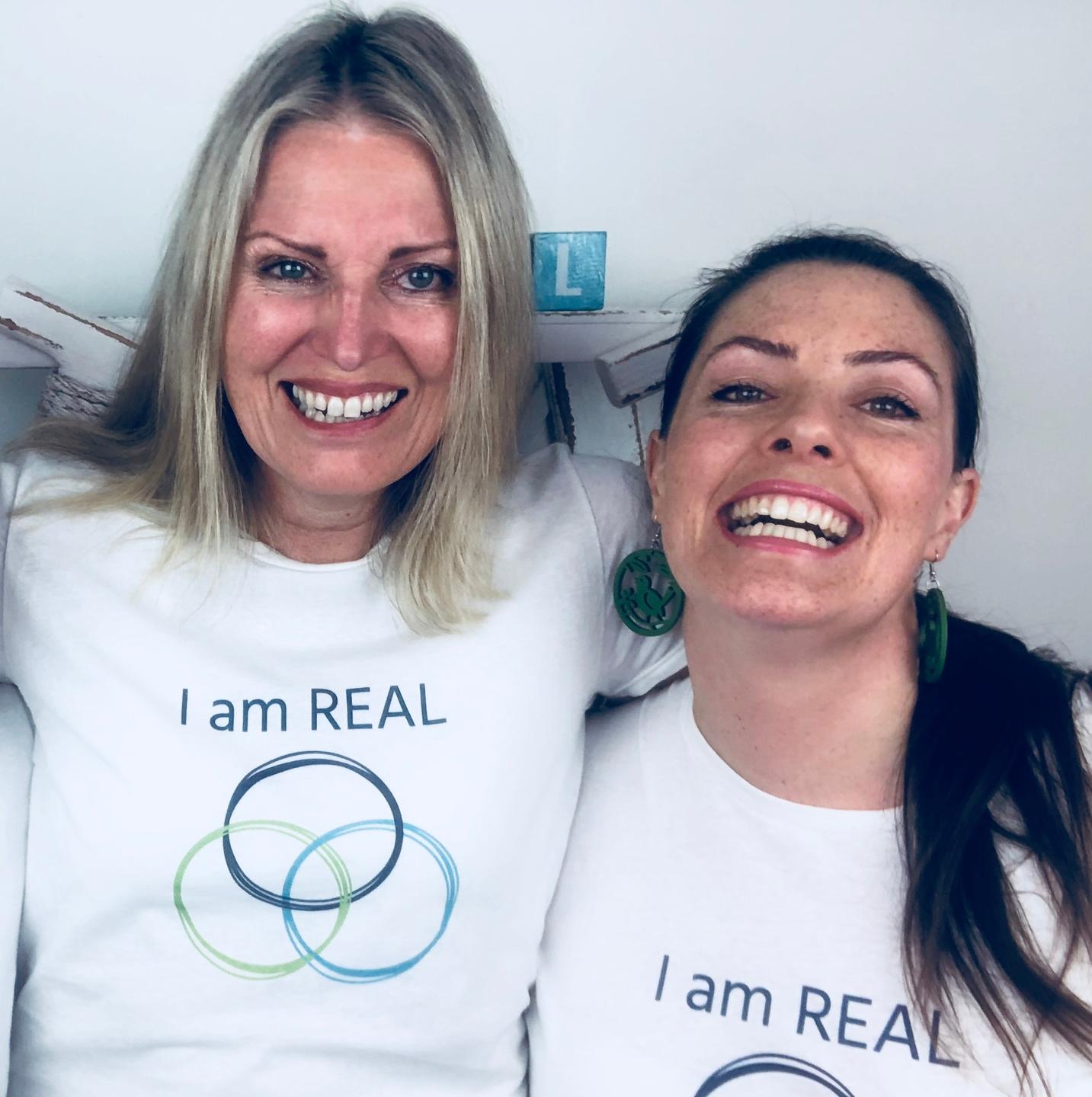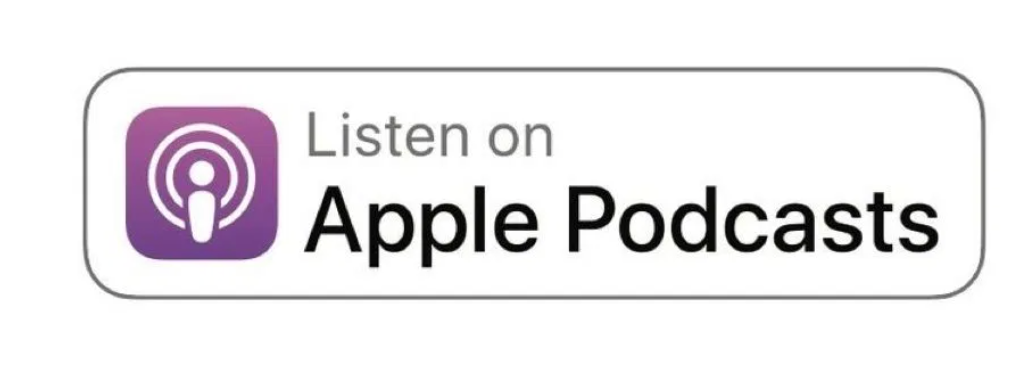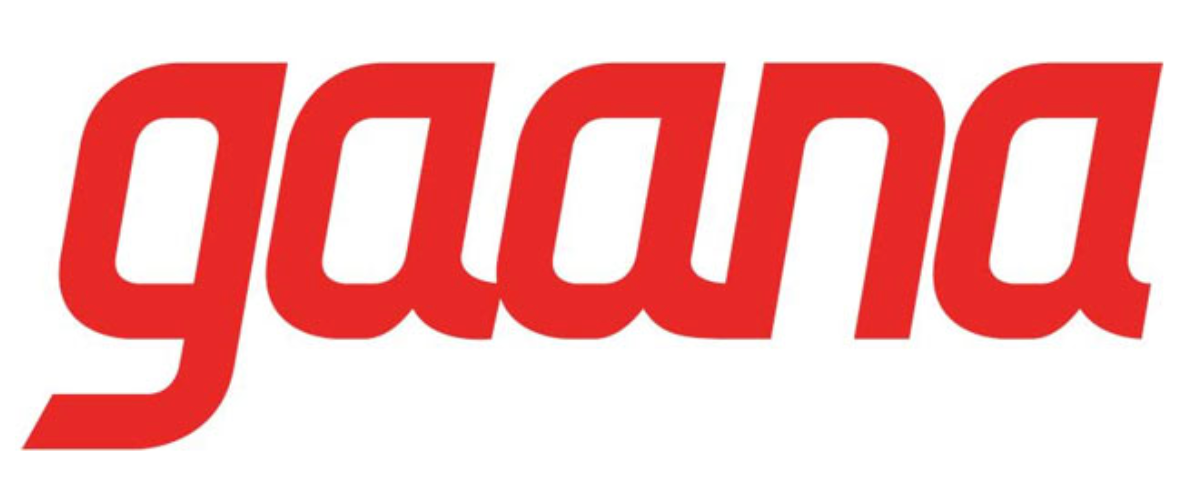



Episode 3:
Show Notes
Low Carb Real Food
- Current nutritional guidelines - attempted to reduce the risk of heart disease by promoting a low-fat diet with a focus on carbohydrates.
- A diet heavy on grains, pasta, fruit and carbohydrates is the cause of increased insulin in our bodies and ultimately insulin resistance and diabetes.
- Consuming carbohydrates make us hungry and we do not feel satiated, so we are then looking for something else to eat.
- Diagnosing insulin resistance - clinical signs are skin tags & skin discolouration. Lab testing - glucose tolerance testing with matching insulin.
- Our blood test recommendations - Fasting insulin and insulin curve, liver function tests, HbA1c, fasting blood glucose, cholesterol and lipid profile, iron studies and vitamin D.
- Focus on low carb real food - grab our red & green food lists here
- More information on good fats & bad fats here
- Coming up next episode - quick & easy meal ideas focussing on low carb real food
Episode 173:
Transcript
Dr Mary Barson: Hello, my lovely listeners. I'm Dr. Mary Barson.
Dr Lucy Burns: And I'm Dr. Lucy Burns. Welcome to this episode of Real Health and Weight Loss.
Dr Mary Barson: Lucy, this episode, we are going to talk about low carb, real food, which is essentially the linchpin of how you reduce insulin and start burning fat for good. So first of all, could you please tell us, how did we all get into this mess, anyway?
Dr Lucy Burns: Yes, it's a very interesting story, some would call it a sordid tale. But for various reasons, it became law, actually, in many countries, that the guidelines and guidelines for the way we should eat were established both in America, Australia and most of the western countries. These guidelines were all aimed at reducing heart disease. And the thought was that the cause of heart disease was fat in our diet. So we all became low fat advocates. Fat was reduced in the diet, which leaves only protein and carbohydrate to take up the slack.
Now, interestingly, proteins are quite an expensive macronutrient and carbohydrates are really cheap. So we ended up having a lot larger carbohydrate load in our diet. So if we go back to the fireplace analogy, and if you've missed that, just listen to the previous episode. What has ended up happening is that we are fueling our bodies on a giant pile of kindling. With no logs, or like one log, hardly any logs, a giant pile of kindling is next to our fire. So every time we were hungry, we would eat some carbs, a muesli bar, even fruit is essentially carbohydrate, we ate quickly, we ate pasta, we ate rice. I think the simple answer that carbohydrates are the cause is correct. But how we actually got there is quite complicated. And again, that's possibly, you know, maybe a topic we could talk about further down the track.
So if you imagine you've got this giant pile of kindling next to your fireplace, and the thing is right, this is actually the kicker. Carbohydrates cause insulin to be released, protein causes a small amount of insulin to be released, and fat causes none. So how it is, is that we've grown up thinking fat makes you fat. But in fact, fat does not spike or cause an insulin rise at all. So we've run away from fat, we've got a giant pile of kindling. Every time we eat, we get more and more insulin. Now, just like lots of things, the more you have, the more tolerant you become. So our tissues become tolerant, which means our pancreas has to work harder, we produce more and more insulin, locking away that shed.
The thing is right, that it's not that all of us are out there, you know, hoeing into junk food. And that's a whole different story, because I've got a lot to say on that. And it's not bad. It is not the person who is eating the junk food’s fault. I've got a lot to say on industry promoting junk food. But this is even people that are eating what is supposedly healthy, “heart healthy” grains. And again, I'm using air quotes. I love air quotes, but you can't see them. So they're not much use to you. But grains, legumes, bread, pasta, the initial recommendation was massive amounts of these, 15 serves a day of various grains. And that has been really the driving factor.
Dr Mary Barson: So it's the increasing carbohydrates in our diet that have caused the problem with increased insulin. And as you said there, we get tolerant to it. So the more our bodies have to make insulin, the more insulin resistant we become.
Dr Lucy Burns: Absolutely. And I think the other thing to I guess just point out to our listeners is that the thing with carbohydrates is that they don't promote satiety. Now satiety is a word that's sort of disappeared out of our language, but satiety is our fullness, so how far we feel after a meal. The only way we can get really full with carbohydrates is volume. And that means our stomach is stretching. And look, to be honest, I used to think that that's what made you hungry. You know, your stomach was empty, like nothing in it, or your stomach was full. And that was hunger. But we now know that hunger is even a hormonal process. Look, we can forgive people for not knowing that because literally that was only discovered in the 90s. It's newish science still, it wasn't sort of something we've known about for the last 150 years. So carbs make us hungry and I'm sure we all know that. Do you find that Mares?
Dr Mary Barson: Yes, absolutely. And particularly when you eat carbohydrates, you know, such as an apple or a sandwich, bread or pasta, your body has to, say you eat a bowl of pasta, the pasta is basically sugar. Starch in the pasta is just a whole lot of sugar molecules, glucose molecules joined together. The moment that we eat the pasta, it turns into sugar. In fact, it even starts to turn to sugar in our saliva in our mouth, we've got enzymes that break down the starch. So a bowl of pasta is a bowl of sugar. So we eat a bowl of pasta, sugar, and all of that sugar hits our bloodstream. It can't stay there, high blood sugar is dangerous, so our bodies must make insulin. And often your body will actually overshoot so it'll deal with this huge carbohydrate load, make a whole pile of insulin to deal with it, to turn that sugar, take the sugar from the blood and let our body store it as fat and it’ll overshoot so you actually get low blood sugar, which will make you kind of have a sugar crash and get hungry again, a very short time after eating your high carb meal.
Dr Lucy Burns: Exactly. The thing is also that we, you know, people eat big bowls of pasta, pasta, you know, there are dedicated pasta bowls, they’re huge, nobody eats pasta in a little teacup, because three strands of spaghetti is not going to fill you up at all, you need a big whopping amount of it. Because it doesn't signal those satiety hormones, it only fills us up by over-stretching our stomach.
Dr Mary Barson: So the reason that people have become insulin resistant and have elevated insulin, it's because of a high carbohydrate diet that is sort of out of whack with our genetics, for example. So how would you know if you've got high insulin or insulin resistance?
Dr Lucy Burns: Okay, so there's a couple of, I guess we call them clinical signs that will lead you to the idea that you may be insulin resistant. And insulin is - apart from sort of sorting out the sugar - it's also a growth hormone. It's good to think of it in terms like that, because high insulin causes skin tags. So if you're a person with lots of, you know, little skin tags around your neck or under your armpit, something like that, that's often a good indicator of high circulating insulin. In some people, it can also cause some discoloration of their skin. And these are, in particular in areas like under your armpits or in your groin, sometimes on your neck. And you'll have a brown pigment, and that's often insulin resistance. But the ultimate way to test is through a blood test.
Now, unfortunately, it's not like a glucose test where you can do a finger prick and measure it at home, you can only get it done through a pathology lab. And we recommend, if you're not on a low carbohydrate diet, our recommendation is to get a glucose tolerance test with corresponding insulin. So what that means is that you actually have a measured, a regulated amount of carbohydrate or glucose. We then see how much insulin does your pancreas produce in response to that? So it's almost like looking under the hood of the car. Because if we just check glucose, the glucose is often normal. It makes sense doesn't it, because that's the pancreas’ job. Make lots of insulin to keep the glucose normal. So glucose will be normal but insulin can be anything! We can have no idea about it. I think Mares, we should put some show notes at the end of this and we'll put a list of perhaps helpful blood tests that could be helpful for people to have a little look at. So Mares, you know I love talking about insulin. It is one of my favourite topics to bang on about. But it's all very well knowing what your insulin result is. We've discussed it, there are no specific tablets to fix it. And we mentioned that the key is low carb real food. So what the hell's that?
Dr Mary Barson: Low Carb Real Food is one of the most powerful tools out there for losing weight, losing fat sustainably, and getting well. So, we have already mentioned, it's not about calories, it's about your hormones, and you can tame and nurture your hormones back to health, your metabolic hormones back to health by choosing low carb, real food. I'm going to tackle the real bit first what “real” food is, is food as close as possible to its natural state. The type of food that we human animals evolved to eat is real food. It’s natural foods. It is foods like vegetables, fruit, nuts, and seeds. It's foods like eggs, meat, fish and seafood. And basically, with all the food that you eat, you want to be consuming it in as close as possible to its natural state when it was taken from the animal, or plucked from the vine or pulled from the plant. That is natural food. That's the real component. And that is so important because highly processed foods wreak havoc with our metabolic hormones. Highly processed foods, like refined flour, and refined sugar, cause massive increases in our insulin and as well as other hormones that put us in a fat storing state where we can't lose weight. So real food is really important for a whole host of reasons. So I recommend that absolutely everybody eat real food as much as possible. If it comes from a packet or a box, just rethink it. Aim for real food. So that's the real bit. But if you have a weight loss goal, say you are overweight and you want to lose body fat. Or if you have metabolic disease, perhaps you know that you have high insulin, or you've got diseases related to high insulin such as fatty liver, or in my case, polycystic ovarian syndrome, and you've got metabolic issues, then you need to eat real food, yes, but also eat low carbohydrate versions of that real food. So that is not eating, or avoiding foods that are high in sugar, and starches. And starch is essentially just sugar. Our bodies break it down. So does that make sense?
Dr Lucy Burns: It does, it does. But I'm thinking people might need a little more clarification about what specific foods should they be avoiding?
Dr Mary Barson: Totally. We've discussed the real foods. So if you are on a low carb, real food diet, then you want to avoid those real foods that are high in sugar and or starches. So they include the starchy vegetables. Most vegetables that grow underground, such as potatoes, sweet potatoes, carrots, these are really starchy veggies. They're not inherently bad. There's nothing bad about a potato. Unless you have got high insulin and you want to lose weight, then eating potatoes will not serve you well. It's also the sugary foods like fruit. Fruit is very high in sugar. It is basically nature's candy. So you want to avoid sugary fruit, which is basically all fruit. A few berries every now and again is okay on a low carb real food diet. But all fruits and starchy veggies as well as legumes like chickpeas and other beans, they are quite starchy as well. So it sounds like you're excluding a lot but really it does leave you with a whole lot of lovely, delicious real foods that you can eat, you know an absolute rainbow of non starchy veggies, meat, fish, eggs, nuts, little bit of berries, seafood, as well as healthy fat. And healthy fats are the natural fats, fats that come from nature, and they include butter and lard and tallow and animal derived fats, as well as plant derived fats like olive oil, coconut oil, avocado oil. A special mention here for fats that you want to avoid is industrialised processed seed oils, and we could talk more about these in future episodes, but they're just very inflammatory and bad for your health. They are canola oil, sunflower oil, safflower seed oil, rice bran oil. They are best avoided, and it leaves you this absolute wonderous palette of delicious, whole, real food that you can eat and enjoy and heal your metabolism while you do so.
Dr Lucy Burns: So Mares, What about porridge?
Dr Mary Barson: I love that you asked that. Porridge comes from the grain family and grains are an interesting one. They are by and large, highly processed in the form that we eat them. So, by the time flour gets to your pantry shelf, it's been highly processed and is no longer real. The same actually goes for oats. People could make an argument that you can have less processed grains, you know, such as amaranth or millet or steel cut oats and absolutely, I think you probably can on a real food diet, but they are not low carb. Grains are very high in starches. In fact, they are almost all starch. So porridge, rice, pasta, all of those grain related foods are not in the low carb real food diet.
Dr Lucy Burns: Okay, so if I mean you know, whenever I look in sort of diabetes magazines, for example, they're always saying, you know, have a good, healthy breakfast of porridge and yoghurt and some fruit. What are your thoughts on that?
Dr Mary Barson: Breaks your heart doesn't it. Breaks my heart. I get somewhere between sad and angry. I get “sad-gry”. Very sad. Yeah, look, I'm not the only one. So yes, who feels this way? Yeah, unfortunately, the wheels of change grind very slowly. In medicine, they grind very slowly indeed, and much of the advice for weight loss and advice for diabetes and polycystic ovarian syndrome disorders related to high insulin, are unfortunately outdated and have not yet caught up with the state of the science and it is changing. Look, I am heartened that things are getting better. The CSIRO released its low carb book about four years ago, and like it's pretty good. Things are changing, they are getting better. But still, unfortunately, a lot of the official advice is still really outdated. And the only way to really heal metabolic illness, the only way to get insulin down and open your woodshed to burn your logs of fat is with low carb real food. And later on, we'll talk about how you combine that with intermittent fasting. You know what I reckon Lucy, we should go through just in broad terms our Green List and Red List. What do you reckon?
Dr Lucy Burns: Sure.
Dr Mary Barson: All right, do you want to start off with the Red List foods?
Dr Lucy Burns: So red list, look. The Red List is basically all grains. So that includes porridge, so oats, wheat, which therefore follows on to be flour, bread, clearly cakes, things like couscous, quinoa. I know that quinoa has been touted as a superfood. And again, this is the one of those things that we talk about where the treatment of obesity is different to the prevention. Once you're insulin resistant, quinoa is not your friend. That covers I guess most of the grains. If you want to look and just sort of let go of the “Big Five”, you'd be looking at ditching sugar, flour, potatoes, rice, and pasta. If you can take those out of your diet, even before you do anything else, you will find that will dramatically drop your insulin.
Dr Mary Barson: Alright, excellent. So that is a wonderful introduction to the Red List and the things that you want to avoid and it's a great actionable step. Next week we will go into the green list.
Dr Lucy Burns: Because we've also got some fabulous meal ideas that you can do easily to make this lifestyle simple. It's not about making it hard. We don't want to make your life hard. But we also know that we have been hoodwinked by the fast food industry and by the snack food industry and by the processed food industry and we have forgotten how to make real food super quick and super delicious.
So my lovely listeners that ends this episode of real health and weight loss. I'm Dr. Lucy Burns
Dr Mary Barson: and I'm Dr. Mary Barson. We’re from Real Life Medicine. To contact us, please visit www.rlmedicine.com
Dr Lucy Burns: And until next time, thanks for listening







